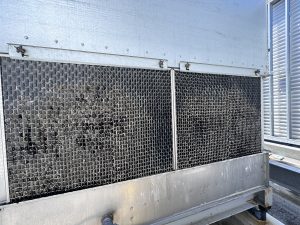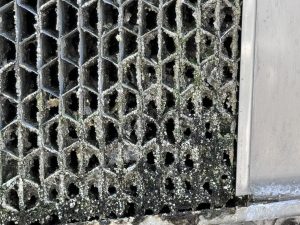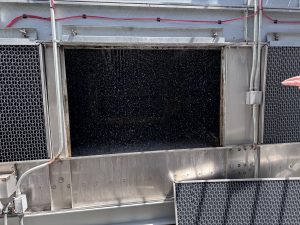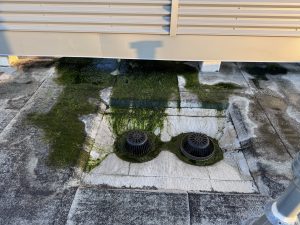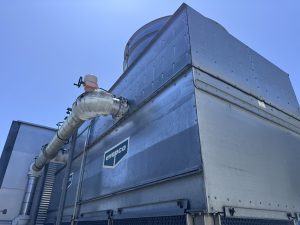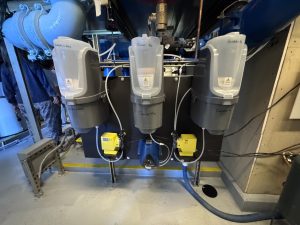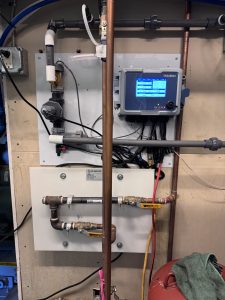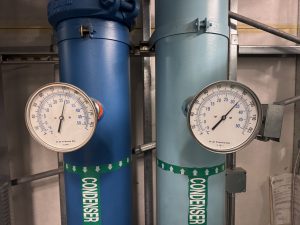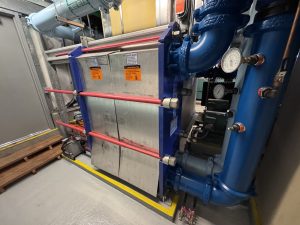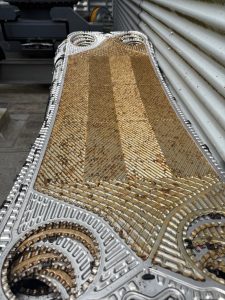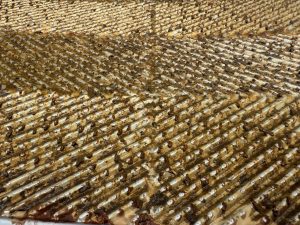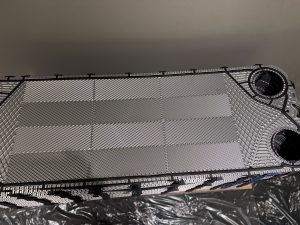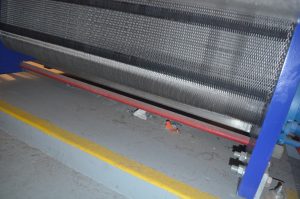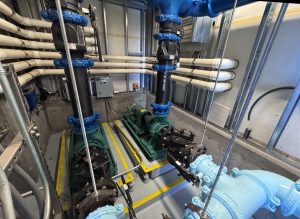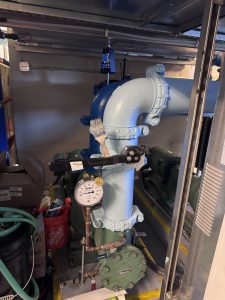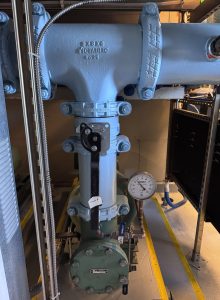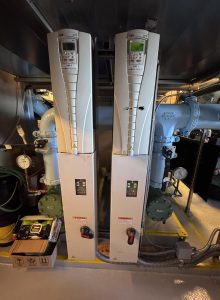How does our HVAC work?
Ever wonder how the Atwater provides heating and cooling for units at the same time?
Our units have what are called “water-sourced” heat pumps. In a conventional home, you have part of your HVAC indoors, either as air conditioning or a heat pump. Then there is part of your HVAC that’s outside – any heat that’s pulled out of or pumped into your unit is exchanged with the air outside. Refrigerant is pumped through a hose connecting the two.
A window air conditioner bypasses that hose and puts both parts in a box. Half of it is inside, and the half outside exchanges heat with the air.
In our units, we have water line that comes from the roof, with water at a temperature such that your heat pump can pull heat out of (heating during winter), or put heat into (summer A/C).
However, that water needs to be either heated or cooled, and all that equipment is on the roof.
HVAC Cooling – Cooling Tower
The cooling at the Atwater works by taking the water line that goes into your unit’s HVAC, and uses a heat exchanger to cool that by the water loop that goes to the cooling tower. While water drips down from inside, air is sucked in through the grates and evaporation cools the water, which then cools your unit’s HVAC water via the heat exchanger.
Why not just use the water in the cooling tower in the loop that goes into your unit? See some shots down below where the heat exchanger was rebuilt – stuff grows in the cooling tower water that has to be treated with chemicals, whereas the water on your side of the heat exchanger is nice and sterile, keeping any sludge out of your HVAC’s heat exchanger.

This is how it looks now under Spectrum – the old media was so clogged it couldn’t be cleaned, it had to be replaced
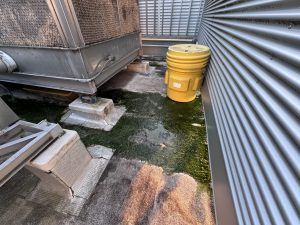
From CMI’s time – A leak in the cooling tower allowed algae to grow. This also indicates the water wasn’t being treated properly
Equipment Room
The equipment room on the roof is where the boilers for your hot water and HVAC heating are kept, and where the heat exchanger for your HVAC cooling connects to the cooling tower. The water lines that go into your unit, and the cooling tower water loop both need to be treated with chemicals to prevent corrosion and growth of micro organisms.
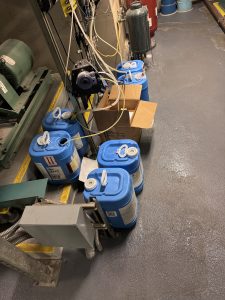
During CMI’s time – water treatment chemicals. Note there is no containment to prevent leaks, and there are stains on the floor which indicate leaks have happened.
HVAC Heating
So, if the cooling tower cools the water that goes to your unit, how does it heat it? The answer is: we have 3 gas-fired boilers
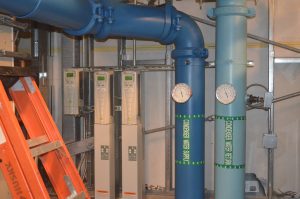
We can see the water leaving the rooftop before it goes to your unit is at about 70F – coming back, after units have pulled heat from the water to heat their units, the temperature is now 67F or so.
When the cooling tower is used to cool the water during a hot day, it looks like this:
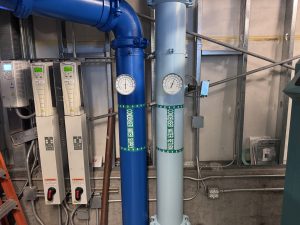
The water going to the units is about 77 F, returning it’s about 84 F. The electronics to the left are VFDs (Variable Frequency Drives), which control motor speeds.
Water from the cooling tower exchanges heat with the water that goes into your unit via a heat exchanger:
The old heat exchanger exceeded the normal resistance to pump water through, so it was rebuilt. Here are some shots from the teardown of old unit:

These red rods are under tremendous tension, they clamp all those plates together under very high pressure, and water from the cooling tower and your units flow through, exchanging heat. Note all the warning labels!
Back to Virtual Building Tour

